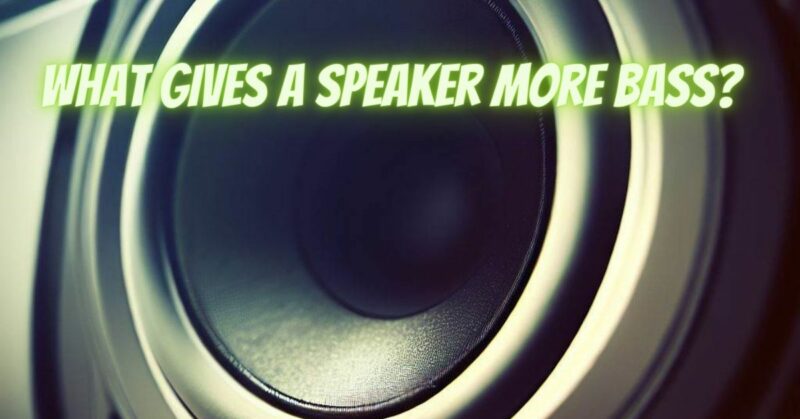The bass response of a speaker is determined by a number of factors, including the size of the speaker, the material of the speaker cone, the design of the speaker enclosure, and the power of the amplifier.
The size of the speaker: The larger the speaker, the more low-frequency sound it can produce. This is because a larger speaker cone can move more air, which creates more low-frequency sound waves.
The material of the speaker cone: The material of the speaker cone also affects the bass response. Some materials, such as paper, are better at producing low-frequency sound than others, such as plastic.
The design of the speaker enclosure: The design of the speaker enclosure can also affect the bass response. A sealed enclosure will produce more bass than a ported enclosure. This is because a sealed enclosure traps the sound waves inside the enclosure, which makes them louder.
The power of the amplifier: The power of the amplifier also affects the bass response. A more powerful amplifier can drive the speaker cone harder, which produces more low-frequency sound.
In addition to these factors, there are a few other things that can be done to improve the bass response of a speaker. These include:
- Placing the speaker in a corner or near a wall. This will help to reflect the sound waves back into the room, which will make the bass sound louder.
- Using a subwoofer. A subwoofer is a speaker that is specifically designed to produce low-frequency sound. Adding a subwoofer to your speaker system will give you even more bass.
- Using a bass boost circuit. A bass boost circuit is a device that can be used to increase the bass response of a speaker.
Ultimately, the best way to get more bass from a speaker is to experiment with different factors and see what works best for you.


